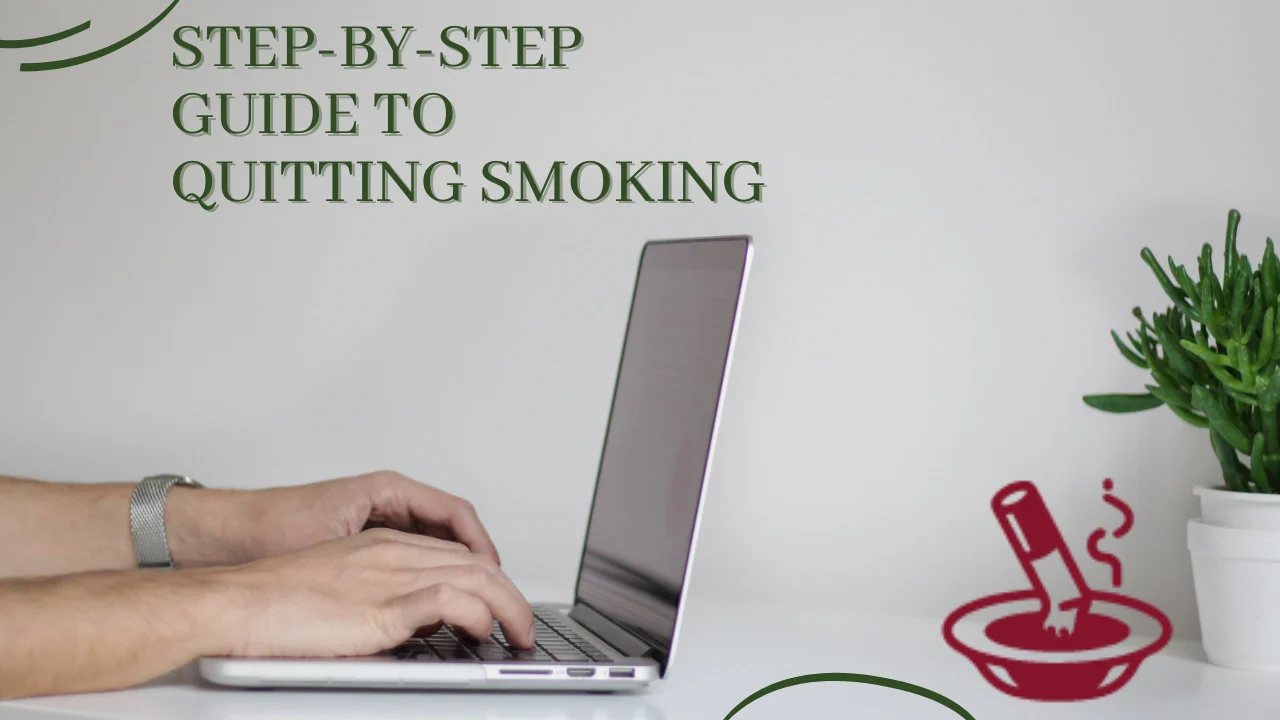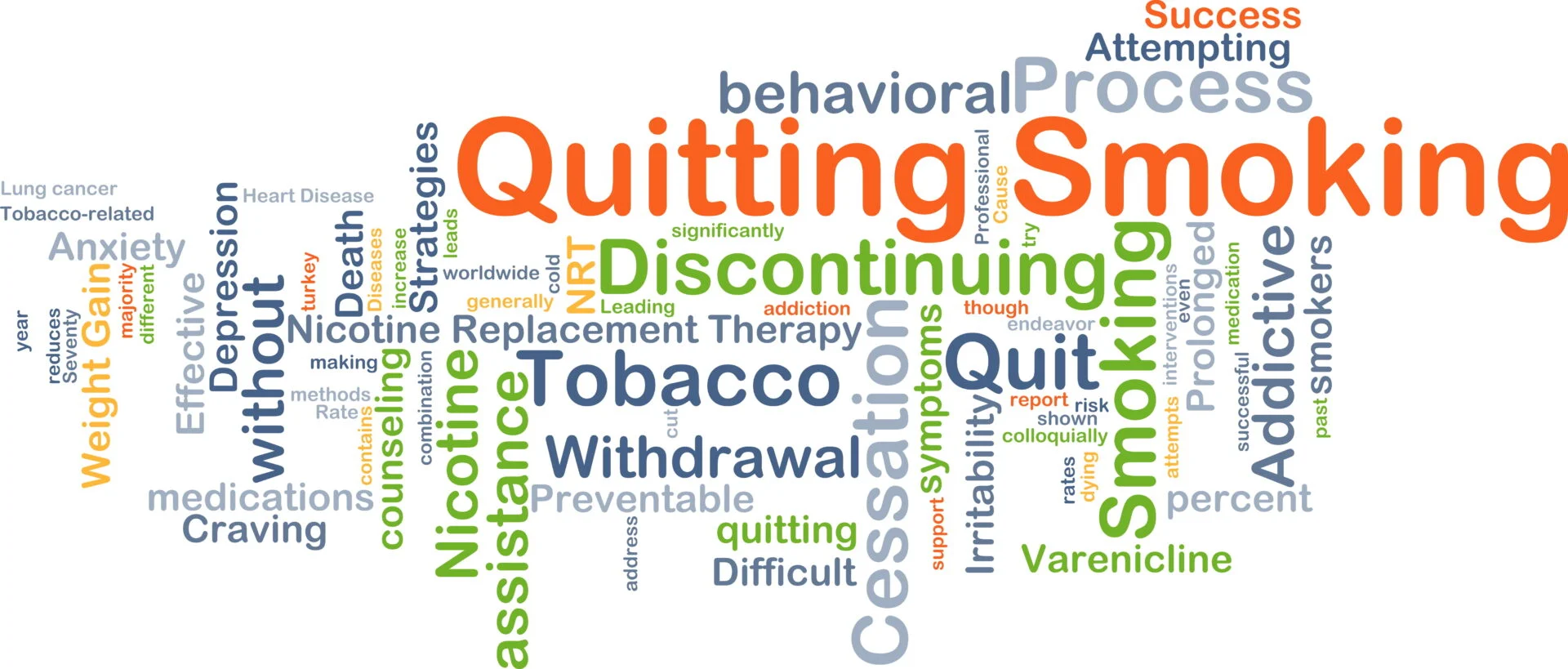Nicotine is more addictive than heroin and cocaine. smoking is a major cause of disease and the leading cause of preventable death. Smoking cigarettes contributes to almost 1 in 5 deaths. Quitting smoking and staying smoke-free can be a challenge, it is a process, not an event. It takes most smokers many quit attempts before they are smoke-free for life, but many people have done it successfully. There are different ways and options to help you quit smoking. The best option for you will depend on your personal preference and your medical condition.
Learn about the different methods and choose which ones might work best for you.
Quitting Cold Turkey
Giving up smoking suddenly, without any help or support, is known as quitting cold turkey. Only the most disciplined people can quit this way. studies show only about 4-7% can do it without any additional help. People who use this method rely on their own willpower to get them through the cravings and withdrawal symptoms.
If you decide to quit cold turkey , here are some tips to help you succeed
- Think about the reasons you want to quit.
- Get support from family and friends.
- Learn your triggers and come up with coping mechanisms.
- Focus on the benefits of not smoking.
- Avoid any situation that will trigger your desire to smoke.
- Make a list of activities that you can do when you are experiencing craving.
- Find new hobbies.
- Avoid temptations.
- Exercise and drink a lot of water.
Nicotine Replacement Therapy (NRT)
Nicotine replacement therapy (NRT) are licensed medicines that give you a low level of nicotine. They do not contain the other poisonous chemicals present in tobacco smoke. NRT aims to reduce the cravings and withdrawal symptoms that occur when you stop smoking. When used properly, NRT can make a big difference in helping you quit successfully.
NRT available in the pharmacies without a prescription such as Nicotine Patches, Gum, Inhalers, Lozenges, and Mouth Spray.
How does NRT work?
When you smoke it takes just seconds for nicotine to go from the lungs to the brain. The brain is filled with receptors that now being a smoker, they eagerly await incoming nicotine. When the nicotine fills the receptor, a feel-good chemical called dopamine is released, giving you a little hit or buzz. This doesn’t last long. The nicotine soon fades making the receptor eager for more. NRT provides just enough nicotine into the bloodstream without the other harmful chemicals, which help reduce your cravings and withdrawal symptoms, such as restlessness, anxiety, and lack of concentration, this will help you to focus on the emotional aspects of quitting.
Sometimes combining tow forms of NRT works better such as using the patch and mouth spray. The Patch releases nicotine slowly which gives you a steady dose of nicotine while the mouth spray releases nicotine more quickly which helps you deal with sudden cravings.
Prescription Medications
There are several available prescription medications that can help you quit smoking. These medications are not suitable for everybody, so talk to your doctor to find out which one is the best for you.
Varenicline ( Champix) is a medicine that works in 2 ways. It reduces cravings for nicotine like NRT, but it also blocks the rewarding and reinforcing effects of smoking.
Bupropion (Zyban) is a medicine originally used to treat depression, but it has since been found to help people quit smoking.
It’s not clear exactly how it works, but it’s thought to have an effect on the parts of the brain involved in addictive behaviour.
Prescription medications have side effects, you must consult with your health care provider to find out what these side-effects are and if these medications are good for you.
E-Cigarette
An e-cigarette is an electronic device that delivers nicotine in a vapour. This allows you to inhale nicotine without most of the harmful effects of smoking, as the vapour contains no tar or carbon monoxide. Using an e-cigarette can help you manage your nicotine cravings.
Vaping is a way to quit cigarettes by getting nicotine with fewer of the toxins that come from burning tobacco. You get to stay social, spend less, and once you’ve quit smoking, you’ll feel better for it. Although vaping’s much less harmful than smoking, it’s not harmless. You should plan to eventually quit vaping too, but only when you know you won’t go back to smoking.
The long-term risks of vaping are not yet clear. You should consult with your doctor before switching to E-Cigarette.
Alternative methods
Alternative methods include Hypnotherapy, Acupuncture, and Cold Laser Therapy.
Hypnotherapy
A trained hypnotist uses guided relaxation techniques to lead you into intense concentration, meditative state in which you become more open to advice and positive suggestions. The therapist makes suggestions based on your goals. many people quit smoking with the aid of hypnosis. Science shows that hypnosis is an effective way to quit smoking. Hypnosis can help you quit cigarettes by addressing the psychological aspects of your addiction and looking into your underlying motivations for smoking. Hypnosis alone may not be enough to help you quit smoking for good. But it may help to weaken your desire to smoke and reinforce other things you’re doing to quit.
Acupuncture
A trained therapist uses very thin small needles to stimulate specific points on the body, to relieve pain and enhance health and well-being. The needles rebalance the body’s energy and prompt the body to release natural chemicals to fight the illness or symptom. Acupuncture is used as a method to quit smoking, by stimulating certain body points to reduce cravings and alleviate withdrawal symptoms. Acupuncture allows the body to reset itself and learn how to relax in the midst of a craving.
Laser Therapy
It is related to acupuncture. In this method, cold lasers are used instead of needles. Cold laser therapy uses pinpoint cold laser equipment to activate acupoints that reduce cravings. The laser treatment stimulates the nerve endings which will allow your brain to release endorphins. Endorphins help relieve pain, reduce stress, and improve your sense of well-being. By enhancing endorphin levels, laser therapy can help mitigate the anxiety, irritability, and cravings often associated with nicotine withdrawal, making the quitting process more manageable.
Another advantage of laser therapy is its capacity to deliver immediate results. Many individuals experience a substantial decrease in cravings after just one session, which is particularly important during the early stages of quitting when the urge to smoke is at its peak. Additionally, the procedure is quick and generally painless, with sessions lasting only 30 minutes to an hour, making it easy to fit into a busy lifestyle.
Laser Therapy is one of the most popular methods for quitting smoking because it’s painless, has no side effects, quick, and effective.
Quitting smoking is considered one of the hardest bad health habits to break. But there are so many different methods and options available to help you on your journey to become a non smoker.
Overall, Laser Therapy for smoking cessation is an excellent option due to its non-invasive nature, rapid effects, holistic approach, and potential for high success rates. It offers a viable alternative for those looking to break free from nicotine addiction.
In this blog post, we’ll explore some of the main reasons why quitting smoking is hard. We’ll discuss how nicotine addiction, habit and routine, withdrawal symptoms, social and environmental factors, and lack of support can all make quitting smoking a challenging task. By understanding these factors, you can be better prepared for the challenges of quitting smoking and find strategies to help you succeed. So let’s dive in!
Nicotine addiction:
Nicotine is a highly addictive substance found in cigarettes and other tobacco products. When you inhale nicotine, it reaches your brain within seconds and triggers the release of dopamine, a neurotransmitter that produces feelings of pleasure and reward. Over time, your brain becomes used to the presence of nicotine, and you start to feel like you need it to function normally. This is how addiction takes hold.
Nicotine addiction can be a major obstacle to quitting smoking. When you try to quit, you may experience intense cravings for nicotine, which can make you feel irritable, anxious, and moody. These cravings can be so strong that they make it hard to concentrate on anything else, and they may cause you to relapse and start smoking again.
Another factor that makes nicotine addiction challenging to overcome is that it’s both physical and psychological. While your body craves nicotine, your mind may also be attached to the ritual of smoking, such as the feeling of holding a cigarette, the taste, or the social aspect of smoking with friends or coworkers.
To overcome nicotine addiction when quitting smoking, you may need to use a combination of strategies, such as nicotine replacement therapy (NRT) or prescription medications that can help reduce cravings and withdrawal symptoms. You may also benefit from counseling or support groups that can help you work through the psychological aspects of addiction and develop new coping strategies.
Ultimately, breaking the addiction to nicotine requires time, effort, and persistence. But by understanding the nature of addiction and using effective strategies to overcome it, you can successfully quit smoking and improve your health and wellbeing.
Habit and routine:
Smoking can become a habit and routine part of daily life, making it hard to quit. Over time, smoking may become intertwined with other habits or activities, such as taking a smoke break at work, smoking after meals, or smoking while drinking alcohol or coffee. These habits and routines can be hard to break and may make you feel like something is missing when you try to quit smoking.
Breaking a habit can be challenging because habits are deeply ingrained in our brains. Habits are automatic behaviors that we perform without thinking, and they can be triggered by certain cues or triggers in our environment. When you try to quit smoking, you may find that you feel restless, anxious, or bored because you’re not engaging in the familiar routine of smoking.
To overcome the challenge of habit and routine when quitting smoking, it can be helpful to identify the specific triggers or cues that lead you to smoke, and then try to avoid or replace them. For example, if you always smoke on your way to work, you might try taking a different route to break the habit. Or if you smoke when you’re stressed, you might try practicing relaxation techniques, such as deep breathing or meditation, instead of reaching for a cigarette.
Another strategy is to create new habits and routines that can replace smoking. This can help you feel like you’re not missing out on anything and can also provide a sense of accomplishment and motivation. For example, you might start a new exercise routine, take up a new hobby, or start a daily gratitude journal.
Breaking a habit and routine takes time and effort, but by being mindful of your habits and routines and making small changes, you can successfully quit smoking and develop new healthy habits that support your overall wellbeing.
Withdrawal symptoms:
When you quit smoking, you may experience a range of physical and psychological symptoms, known as withdrawal symptoms. These symptoms can include headaches, dizziness, fatigue, irritability, anxiety, depression, and difficulty concentrating. Withdrawal symptoms can make quitting smoking feel challenging, and they can be a major obstacle to staying smoke-free in the long term.
Withdrawal symptoms occur because your body is adjusting to the absence of nicotine, and it can take time for your brain to rewire itself to function without it. The intensity and duration of withdrawal symptoms can vary depending on factors such as how long you’ve been smoking, how much you smoke, and your overall health.
To manage withdrawal symptoms when quitting smoking, there are several strategies you can try. Nicotine replacement therapy (NRT), such as patches, gum, or lozenges, can help reduce the intensity of cravings and withdrawal symptoms. You may also benefit from prescription medications that can help reduce cravings or manage symptoms such as depression or anxiety.
Engaging in regular exercise or other physical activity can also help manage withdrawal symptoms by releasing endorphins, which can improve mood and reduce stress. Making sure to get enough sleep, eating a healthy diet, and practicing stress-reducing techniques, such as meditation or deep breathing, can also help manage withdrawal symptoms.
While withdrawal symptoms can be uncomfortable, they are temporary and will eventually subside as your body adjusts to life without nicotine. By being prepared for withdrawal symptoms and using effective strategies to manage them, you can successfully quit smoking and improve your health and wellbeing.
Social and environmental factors:
Social and environmental factors can play a major role in smoking behavior and can make quitting smoking challenging. For example, smoking may be a social activity that you share with friends or coworkers, and being around other smokers can trigger cravings and make it harder to quit. Additionally, certain environments or situations, such as bars or parties, may be associated with smoking and can trigger the urge to smoke.
To overcome the challenge of social and environmental factors when quitting smoking, it can be helpful to identify triggers and make a plan to avoid or manage them. For example, you might try avoiding social situations where smoking is prevalent or asking friends or family members to support you by not smoking around you. You could also try to find new social activities that don’t involve smoking, such as taking a class or trying a new hobby.
Environmental factors can also play a role in smoking behavior. For example, if you associate smoking with certain places, such as your car or your backyard, it can be helpful to find new ways to use those spaces. You might try taking public transportation instead of driving or redesigning your backyard to make it a smoke-free zone.
Another strategy is to create a supportive environment that encourages and reinforces your decision to quit smoking. This can include surrounding yourself with positive and supportive people, creating a smoke-free home or workspace, and using reminders such as motivational quotes or notes to help you stay focused on your goal.
By identifying and managing social and environmental factors that can trigger the urge to smoke, you can successfully quit smoking and create a healthy and supportive environment that helps you stay smoke-free.
Lack of support:
Quitting smoking can be a challenging journey, and having support from friends, family, or healthcare professionals can make a significant difference in your success. However, a lack of support can also be a major obstacle to quitting smoking.
If you feel that you lack support in your efforts to quit smoking, it can be helpful to identify sources of support and make a plan to engage with them. For example, you might consider reaching out to a support group for people who are trying to quit smoking, talking to a healthcare professional about treatment options, or enlisting the support of friends and family members who have successfully quit smoking themselves.
If you don’t have a support system in place, consider seeking out resources that can provide support and guidance as you quit smoking. This can include websites or online communities that offer advice and encouragement, quit-smoking hotlines or helplines, or smoking cessation programs offered by your workplace or community organizations.
In addition to seeking support from others, it’s important to also focus on building your own self-efficacy and resilience as you quit smoking. This can involve setting small goals and celebrating your progress, using positive self-talk, and engaging in activities that help you manage stress and improve your overall wellbeing.
Remember that quitting smoking is a process, and it’s normal to experience setbacks and challenges along the way. By seeking out sources of support, focusing on building your own resilience, and staying committed to your goal of quitting smoking, you can successfully overcome the challenge of a lack of support and achieve a smoke-free lifestyle.
Quitting smoking is a challenging but rewarding journey that requires commitment, support, and perseverance. Understanding the various reasons why quitting smoking is hard can help you prepare for the challenges you may face and develop strategies to overcome them.
Nicotine addiction, habit and routine, withdrawal symptoms, social and environmental factors, and a lack of support are all common obstacles to quitting smoking. However, by utilizing resources and support systems, creating a supportive environment, focusing on building your own resilience and self-efficacy, and using evidence-based strategies such as medication and counseling, you can successfully overcome these challenges and achieve a smoke-free lifestyle.
Remember that quitting smoking is a process, and it’s normal to experience setbacks and challenges along the way. Celebrate your successes, learn from your mistakes, and stay committed to your goal of quitting smoking. With determination, support, and a willingness to try new approaches, you can successfully quit smoking and enjoy the many benefits of a smoke-free life.



